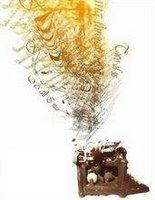Ho´oponopono - por Joe VitaleHá dois anos, ouvi falar de um terapeuta, no Havaí, que curou um pavilhão inteiro de pacientes criminais insanos sem sequer ver nenhum deles. O psicólogo estudava a ficha do preso e, em seguida, olhava para dentro de si mesmo a fim de ver como ele havia criado a enfermidade dessa pessoa. À medida que ele melhorava, o paciente também melhorava. A primeira vez que ouvi essa história, pensei tratar-se de alguma lenda urbana. Como podia alguém curar a outro, somente através de curar-se a si mesmo? Como podia, ainda que fosse o mestre de maior poder de autocura, curar a alguém criminalmente insano? Não tinha nenhum sentido, não era lógico, de modo que descartei essa história.
Entretanto, escutei-a novamente, um ano depois. Soube que o terapeuta havia usado um processo de cura havaiano chamado “
Hoponopono”. Nunca ouvira falar dele, no entanto, não conseguia tirá-lo de minha mente. Se a história era realmente verdadeira, eu tinha que saber mais. Sempre soubera que total responsabilidade significava que eu sou responsável pelo que penso e faço. O que estiver além, está fora de minhas mãos. Acho que a maior parte das pessoas pensa o mesmo sobre a responsabilidade.
Somos responsáveis pelo que fazemos e não pelo que fazem os outros. Mas isso está errado.O terapeuta havaiano que curou essas pessoas mentalmente enfermas me ensinaria uma nova perspectiva avançada sobre o que é a total responsabilidade. Seu nome é
Dr. Ihaleakala Hew Len. Passamos, provavelmente, uma hora falando em nossa primeira conversa telefônica. Pedi-lhe que me contasse toda a história de seu trabalho como terapeuta. Ele explicou-me que havia trabalhado no Hospital Estatal do Havaí durante quatro anos. O pavilhão onde encerravam os loucos criminais era perigoso.
Em regra geral, os psicólogos se demitiam após um mês de trabalho ali. A maior parte do pessoal do hospital ficava doente ou se demitia. As pessoas que passavam por aquele pavilhão simplesmente caminhavam com as costas coladas à parede com medo de serem atacadas pelos pacientes. Não era um lugar bom para viver, nem para trabalhar, nem para visitar.
O Dr. Len disse-me que nunca viu os pacientes. Assinou um acordo para ter uma sala no hospital e revisar os seus prontuários médicos. Enquanto lia os prontuários médicos, ele trabalhava sobre si mesmo. Enquanto ele trabalhava sobre si mesmo, os pacientes começaram a curar-se.
“Depois de poucos meses, os pacientes que estavam acorrentados receberam a permissão para caminharem livremente”, me disse. “Outros, que tinham que ficar fortemente medicados, começaram a ter sua medicação reduzida. E aqueles, que não tinham jamais qualquer possibilidade de serem liberados, receberam alta”. Eu estava assombrado. “Não foi somente isso”, continuou, “até o pessoal começou a gostar de ir trabalhar.
O absenteísmo e as mudanças de pessoal desapareceram. Terminamos com mais pessoal do que necessitávamos porque os pacientes eram liberados e todo o pessoal vinha trabalhar.
Hoje, aquele pavilhão do hospital está fechado.”
Foi neste momento que eu tive que fazer a pergunta de um milhão de dólares: “O que foi que o senhor fez a si mesmo para ocasionar tal mudança nessas pessoas?”
“Eu simplesmente estava curando aquela parte em mim que os havia criado”, disse ele. Não entendi. O Dr. Len explicou-me, então, que entendia que a total responsabilidade por nossa vida implica em tudo o que está na nossa vida, pelo simples fato de estar em nossa vida e ser, por esta razão, de nossa responsabilidade. Num sentido literal, o mundo todo é criação nossa.
Uau! Mas isso é duro de engolir.
Ser responsável pelo que digo e faço é uma coisa, mas ser responsável pelo que diz e faz outra pessoa que está na minha vida é muito diferente. Apesar disso, a verdade é essa: se você assume completa responsabilidade por sua vida, então tudo o que você olha, escuta, saboreia, toca ou experimenta de qualquer forma é sua responsabilidade, simplesmente porque está em sua vida. Isto significa que a atividade terrorista, o presidente, a economia ou qualquer coisa que você experimenta e não gosta, está ali para que você a cure. Tudo isto não existe, em realidade, exceto como projeções que saem do seu interior. O problema não está “neles”, está em você, e, para mudá-lo, você é quem tem que mudar.
Sei que isto pode parecer difícil de entender, mais ainda de aceitar ou realmente vivenciar. Colocar a culpa em outra pessoa é muito mais fácil que assumir total responsabilidade mas, enquanto conversava com o Dr. Len, comecei a compreender essa cura dele e que o
ho’oponopono significa amar-se a si mesmo.
Se você deseja melhorar a sua vida, você deve curar a sua vida. Se você deseja curar alguém, mesmo um criminoso mentalmente doente, você o faz curando a si mesmo.
Perguntei ao Dr. Len como ele curava a si mesmo. O que era, exatamente, que ele fazia, quando olhava os prontuários daqueles pacientes.
“Eu, simplesmente, permanecia dizendo ‘Eu sinto muito’ e ‘Te amo’, uma vez após outra” explicou-me.
“Só isso?”
“Só isso! Acontece que amar-se a si mesmo é a melhor forma de melhorar a si mesmo e à medida que você melhora a si mesmo, melhora o seu mundo”.
Permita-me, agora, dar um rápido exemplo de como isto funciona. Um dia, alguém me enviou um e-mail que me desequilibrou. No passado, eu teria reagido trabalhando meus aspectos emocionais tórridos ou tentado argumentar com a pessoa que me enviara aquela mensagem detestável.
Mas, desta vez, eu decidi testar o método do Dr. Len. Comecei a pronunciar, em silêncio: “Sinto muito” e “Te amo”. Não dizia isto para alguém, em particular. Ficava, simplesmente, invocando o “espírito do amor”, para que ele curasse dentro de mim o que estava criando aquela circunstância externa.
Depois de uma hora, recebi um e-mail da mesma pessoa, desculpando-se pela mensagem que me enviara. Eu não realizei qualquer ação externa para receber tal desculpa. Eu nem sequer respondi àquela mensagem. Não obstante, somente repetindo “sinto muito” e “te amo”, de alguma maneira curei dentro de mim aquilo que criara naquela pessoa.
Posteriormente, participei de uma oficina sobre o ho’oponopono, ministrada pelo Dr. Len. Ele tem, agora, 70 anos de idade e é considerado um “xamã avô” e prefere viver recluso. Elogiou meu livro “O Fator Atrativo”. Disse-me que, à medida que eu melhorar a mim mesmo, a vibração do meu livro aumentará e todos sentirão o mesmo quando o lerem. Resumindo, na medida em que eu melhore, meus leitores também melhorarão.
“E o que acontecerá com os livros que eu já vendi e que saíram de mim?” perguntei.
“Eles não saíram”, explicou ele, tocando minha mente, mais uma vez, com sua sabedoria mística .
“Eles ainda estão dentro de você. Porque
nada está do lado de fora”. Seria necessário um livro inteiro para explicar essa técnica avançada com a profundidade que ela merece.
Mas, aprendi que basta, apenas, o “querer” em nossa vida para curar e que existe somente um lugar onde procurar a cura: dentro de si. “Para curar, olhe para dentro de si mesmo. E quando olhar, olhe com amor”.
Nas palavras do Dr. Hen (aqui ainda em inglês):
The words of Dr. Ihaleakala Hew Len:
" Ho'oponopono is really very simple. For the ancient Hawaiians, all problems begin as thought. But having a thought is not the problem. So what's the problem? The problem is that all our thoughts are imbued with painful memories, memories of persons, places, or things.
The intellect working alone can't solve these problems, because the intellect only manages. Managing things is no way to solve problems. You want to let them go! When you do Ho'oponopono, what happens is that the Divinity takes the painful thought and neutralizes or purifies it. You don't purify the person, place, or thing. You neutralize the energy you associate with that person, place, or thing. So the first stage of Ho'oponopono is the purification of that energy.
Now something wonderful happens. Not only does that energy get neutralized; it also gets released, so there's a brand new slate.
To do Ho'oponopono, you don't have to know what the problem or error is. All you have to do is notice any problem you are experiencing physically, mentally, emotionally, whatever. Once you notice, your responsibility is to immediately begin to clean, to say, "I'm sorry. Please forgive me."
Links relacionados:Ho´oponoponoSinto muito! Te amo!호오포노포노
http://www.youtube.com/watch?v=wSfbkG97H7Q




